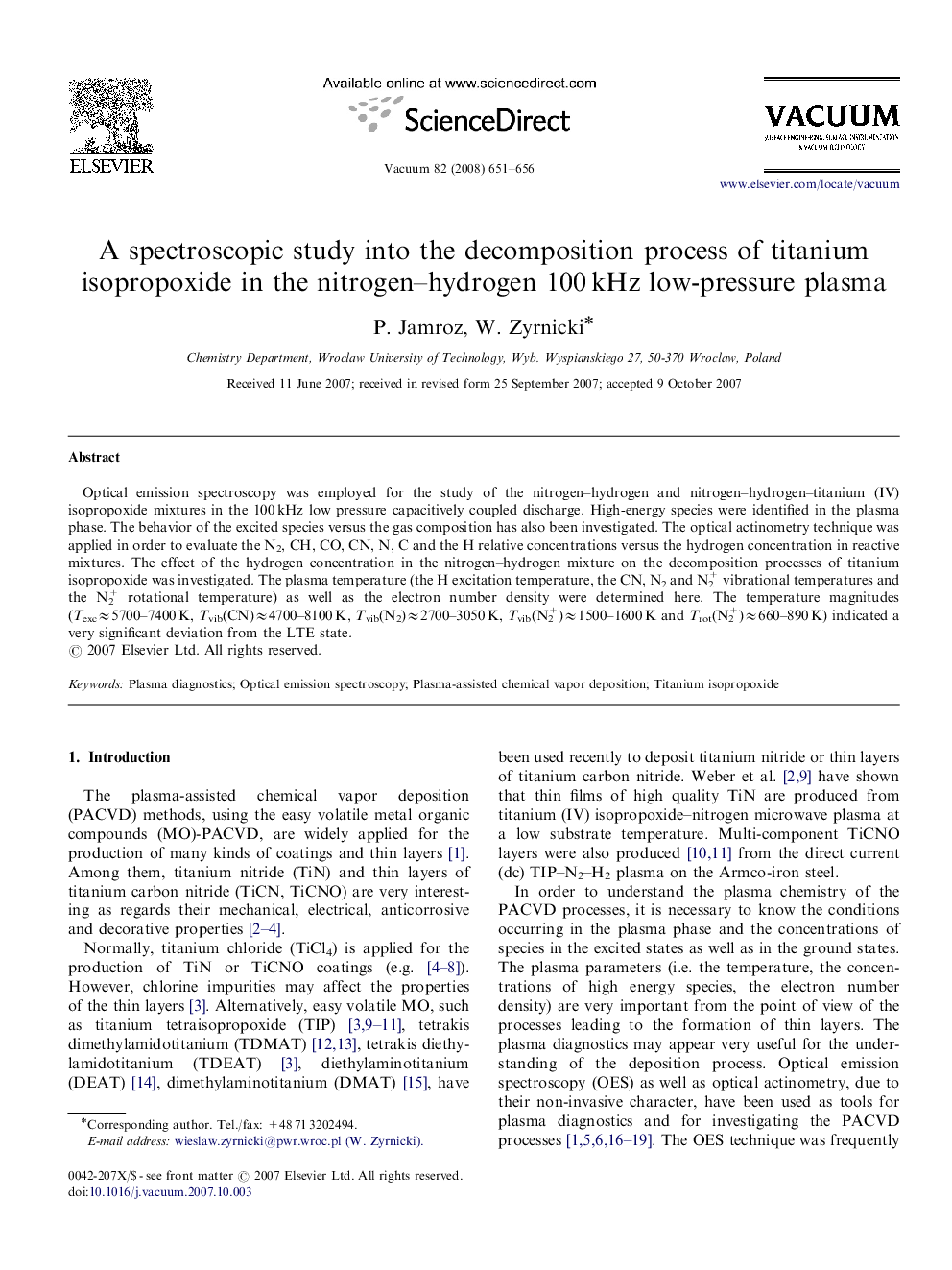| Article ID | Journal | Published Year | Pages | File Type |
|---|---|---|---|---|
| 1691381 | Vacuum | 2008 | 6 Pages |
Optical emission spectroscopy was employed for the study of the nitrogen–hydrogen and nitrogen–hydrogen–titanium (IV) isopropoxide mixtures in the 100 kHz low pressure capacitively coupled discharge. High-energy species were identified in the plasma phase. The behavior of the excited species versus the gas composition has also been investigated. The optical actinometry technique was applied in order to evaluate the N2, CH, CO, CN, N, C and the H relative concentrations versus the hydrogen concentration in reactive mixtures. The effect of the hydrogen concentration in the nitrogen–hydrogen mixture on the decomposition processes of titanium isopropoxide was investigated. The plasma temperature (the H excitation temperature, the CN, N2 and N2+ vibrational temperatures and the N2+ rotational temperature) as well as the electron number density were determined here. The temperature magnitudes (Texc≈5700–7400 K, Tvib(CN)≈4700–8100 K, Tvib(N2)≈2700–3050 K, Tvib(N2+)≈1500–1600 K and Trot(N2+)≈660–890 K) indicated a very significant deviation from the LTE state.
